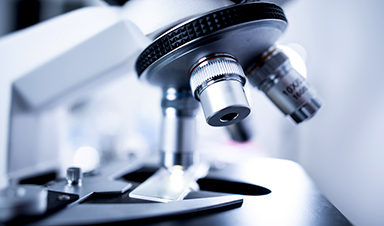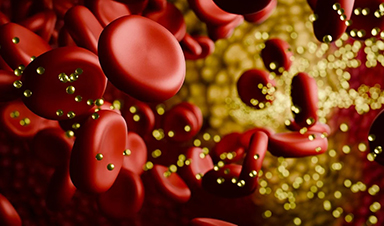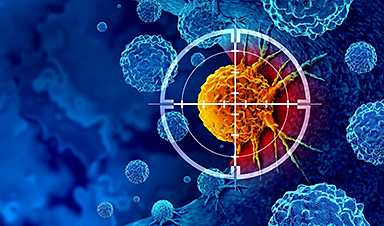Using machine learning to improve living.
A groundbreaking machine-learning study has revealed the optimal drug combinations to prevent the recurrence of COVID-19 after initial infection. Interestingly, the ideal combination differs among patients.
Using real-world data from a hospital in China, the UC Riverside-led study discovered that factors such as age, weight, and other health conditions dictate which drug combinations most effectively reduce recurrence rates. This finding has been published in the journal Frontiers in Artificial Intelligence.
That the data came from China is significant for two reasons. First, when patients are treated for COVID-19 in the U.S., it is normally with one or two drugs. Early in the pandemic, doctors in China could prescribe as many as eight different drugs, enabling analysis of more drug combinations. Second, COVID-19 patients in China must quarantine in a government-run hotel after being discharged from the hospital, which allows researchers to learn about reinfection rates in a more systematic way.
The study project began in April 2020, about a month into the pandemic. At the time, most studies were focused on death rates. However, doctors in Shenzhen, near Hong Kong, were more concerned about recurrence rates because fewer people there were dying.
"Surprisingly, nearly 30% of patients became positive again within 28 days of being released from the hospital," said Jiayu Liao, associate professor of bioengineering and study co-author.
Data for more than 400 COVID patients was included in the study. Their average age was 45, most were infected with moderate cases of the virus, and the group was evenly divided by gender. Most were treated with one of various combinations of an antiviral, an anti-inflammatory, and an immune-modulating drug, such as interferon or hydroxychloroquine.
That various demographic groups had better success with different combinations can be traced to the way the virus operates.
"COVID-19 suppresses interferon, a protein cells make to inhibit invading viruses. With defenses lowered, COVID can replicate until the immune system explodes in the body, and destroys tissues," explained Liao.
People who had weaker immune systems prior to COVID infection required an immune-boosting drug to fight the infection effectively. Younger peoples' immune systems become overactive with infection, which can lead to excessive tissue inflammation and even death. To prevent this, younger people require an immune suppressant as part of their treatment.
"When we get treatment for diseases, many doctors tend to offer one solution for people 18 and up. We should now reconsider age differences, as well as other disease conditions, such as diabetes and obesity," Liao said.
Most of the time, when conducting drug efficacy tests, scientists design a clinical trial in which people having the same disease and baseline characteristics are randomly assigned to either treatment or control groups. But that approach does not consider other medical conditions that may affect how the drug works — or doesn't work — for specific sub-groups.
Because this study utilized real-world data, the researchers had to adjust for factors that could affect the outcomes they observed. For example, if a certain drug combination was given mostly to older people and proved ineffective, it would not be clear whether the drug is to blame or the person's age.
"For this study, we pioneered a technique to attack the challenge of confounding factors by virtually matching people with similar characteristics who were undergoing different treatment combinations," Cui said. "In this way, we could generalize the efficacy of treatment combinations in different subgroups."
While COVID-19 is better understood today, and vaccines have greatly reduced death rates, there remains much to be learned about treatments and preventing reinfections. "Now that recurrence is more of a concern, I hope people can use these results," Cui said.
Machine learning has been used in many areas related to COVID, such as disease diagnosis, vaccine development, and drug design, in addition to this new analysis of multi-drug combinations. Liao believes that technology will have an even bigger role to play going forward.
"In medicine, machine learning and artificial intelligence have not yet had as much impact as I believe they will in the future," Liao said. "This project is a great example of how we can move toward truly personalized medicine."
Reference: "Learning from real world data about combinatorial treatment selection for COVID-19" by Song Zhai, Zhiwei Zhang, Jiayu Liao and Xinping Cui, 3 April 2023, Frontiers in Artificial Intelligence.
DOI: 10.3389/frai.2023.1123285
News
New mRNA therapy targets drug-resistant pneumonia
Bacteria that multiply on surfaces are a major headache in health care when they gain a foothold on, for example, implants or in catheters. Researchers at Chalmers University of Technology in Sweden have found [...]
Current Heart Health Guidelines Are Failing To Catch a Deadly Genetic Killer
New research reveals that standard screening misses most people with a common inherited cholesterol disorder. A Mayo Clinic study reports that current genetic screening guidelines overlook most people who have familial hypercholesterolemia, an inherited disorder that [...]
Scientists Identify the Evolutionary “Purpose” of Consciousness
Summary: Researchers at Ruhr University Bochum explore why consciousness evolved and why different species developed it in distinct ways. By comparing humans with birds, they show that complex awareness may arise through different neural architectures yet [...]
Novel mRNA therapy curbs antibiotic-resistant infections in preclinical lung models
Researchers at the Icahn School of Medicine at Mount Sinai and collaborators have reported early success with a novel mRNA-based therapy designed to combat antibiotic-resistant bacteria. The findings, published in Nature Biotechnology, show that in [...]
New skin-permeable polymer delivers insulin without needles
A breakthrough zwitterionic polymer slips through the skin’s toughest barriers, carrying insulin deep into tissue and normalizing blood sugar, offering patients a painless alternative to daily injections. A recent study published in the journal Nature examines [...]
Multifunctional Nanogels: A Breakthrough in Antibacterial Strategies
Antibiotic resistance is a growing concern - from human health to crop survival. A new study successfully uses nanogels to target and almost entirely inhibit the bacteria P. Aeruginosa. Recently published in Angewandte Chemie, the study [...]
Nanoflowers rejuvenate old and damaged human cells by replacing their mitochondria
Biomedical researchers at Texas A&M University may have discovered a way to stop or even reverse the decline of cellular energy production—a finding that could have revolutionary effects across medicine. Dr. Akhilesh K. Gaharwar [...]
The Stunning New Push to Protect the Invisible 99% of Life
Scientists worldwide have joined forces to build the first-ever roadmap for conserving Earth’s vast invisible majority—microbes. Their new IUCN Specialist Group reframes conservation by elevating microbial life to the same urgency as plants and [...]
Scientists Find a Way to Help the Brain Clear Alzheimer’s Plaques Naturally
Scientists have discovered that the brain may have a built-in way to fight Alzheimer’s. By activating a protein called Sox9, researchers were able to switch on star-shaped brain cells known as astrocytes and turn them into [...]
Vision can be rebooted in adults with amblyopia, study suggests
Temporarily anesthetizing the retina briefly reverts the activity of the visual system to that observed in early development and enables growth of responses to the amblyopic eye, new research shows. In the common vision [...]
Ultrasound-activated Nanoparticles Kill Liver Cancer and Activate Immune System
A new ultrasound-guided nanotherapy wipes out liver tumors while training the immune system to keep them from coming back. The study, published in Nano Today, introduces a biodegradable nanoparticle system that combines sonodynamic therapy and cell [...]
Magnetic nanoparticles that successfully navigate complex blood vessels may be ready for clinical trials
Every year, 12 million people worldwide suffer a stroke; many die or are permanently impaired. Currently, drugs are administered to dissolve the thrombus that blocks the blood vessel. These drugs spread throughout the entire [...]
Reviving Exhausted T Cells Sparks Powerful Cancer Tumor Elimination
Scientists have discovered how tumors secretly drain the energy from T cells—the immune system’s main cancer fighters—and how blocking that process can bring them back to life. The team found that cancer cells use [...]
Very low LDL-cholesterol correlates to fewer heart problems after stroke
Brigham and Women's Hospital's TIMI Study Group reports that in patients with prior ischemic stroke, very low achieved LDL-cholesterol correlated with fewer major adverse cardiovascular events and fewer recurrent strokes, without an apparent increase [...]
“Great Unified Microscope” Reveals Hidden Micro and Nano Worlds Inside Living Cells
University of Tokyo researchers have created a powerful new microscope that captures both forward- and back-scattered light at once, letting scientists see everything from large cell structures to tiny nanoscale particles in a single shot. Researchers [...]
Breakthrough Alzheimer’s Drug Has a Hidden Problem
Researchers in Japan found that although the Alzheimer’s drug lecanemab successfully removes amyloid plaques from the brain, it does not restore the brain’s waste-clearing system within the first few months of treatment. The study suggests that [...]





















